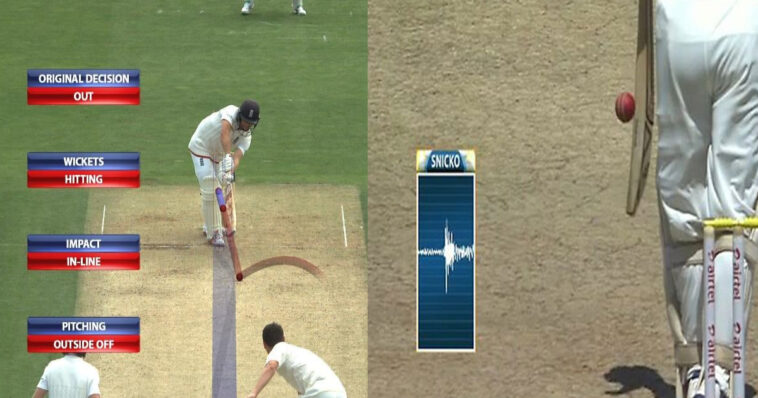Cricket, like many other sports, has undergone a transformation over the years with the advent of technology. The integration of advanced tools and systems has not only enhanced the accuracy of decision-making but has also revolutionized the way the game is played and perceived. In this article, we will explore two significant technological innovations that have left an indelible impact on cricket: Hawkeye and Snicko. We will delve into their functionalities, controversies, and how they have changed the dynamics of the sport.
Hawkeye: Revolutionizing Decision-making
One of the most significant contributions of technology to cricket is the introduction of the Hawkeye system. Hawkeye, initially developed to assist in tennis, made its way into cricket in the early 2000s. It uses multiple cameras to track the trajectory of the ball and predict its path with impressive accuracy. The system has proven instrumental in resolving contentious decisions such as LBW (Leg Before Wicket) appeals, thereby eliminating human error and enhancing fairness.
Hawkeye’s functionality revolves around a complex algorithm that analyzes various parameters, including ball speed, pitch trajectory, and movement off the surface. With these inputs, it generates a 3D visualization of the ball’s path, which assists umpires in determining whether a delivery would have gone on to hit the stumps or not. This technology has become an integral part of the Decision Review System (DRS), allowing teams to challenge on-field decisions and seek a fairer outcome.
However, the introduction of Hawkeye has not been without controversy. Critics argue that the system’s accuracy is not infallible, as it relies heavily on assumptions and limited camera angles. Additionally, the subjectivity of determining the point of impact on the pads and its subsequent projection remains a topic of debate. Nevertheless, the overall impact of Hawkeye has been overwhelmingly positive, reducing the number of erroneous decisions and providing players, spectators, and commentators with a clearer understanding of the game.
Snicko: Unmasking the Silent Edge
Cricket has always grappled with the challenge of determining faint edges off the bat, often leading to heated debates and frustration among players and fans. To address this issue, technology gave birth to Snicko, an innovative tool that uses audio sensors and computer algorithms to detect the tiniest of sounds produced when the ball brushes against the bat.
Snicko operates on the principle that when the ball makes contact with the bat, it creates a unique sound frequency that can be isolated and analyzed. This system amplifies the audio signals and syncs them with video footage, providing a synchronized representation of the sound and the moment of impact. Umpires and third umpires can then review the evidence to make accurate decisions regarding catches, edges, and possible dismissals.
Like any technological advancement, Snicko has not been immune to controversy. Some argue that it is susceptible to interpretation bias and the quality of audio equipment used. There have been instances where Snicko has picked up incidental sounds, creating confusion and raising doubts about its reliability. However, when used in conjunction with other tools such as Hot Spot and slow-motion replays, Snicko has significantly improved the accuracy of decision-making, ensuring fair outcomes on the field.
The integration of technology, particularly the Hawkeye and Snicko systems, has undoubtedly had a profound impact on the game of cricket. These innovations have minimized errors, added layers of fairness, and enhanced the overall viewing experience for spectators. While there are debates and controversies surrounding their implementation, the benefits they bring to the sport far outweigh any limitations. As technology continues to evolve, it is likely that we will witness further advancements and improvements in the realm of cricket technology.
The impact of Hawkeye and Snicko extends beyond the realm of decision-making. These technologies have also enhanced the analysis and understanding of the game. Commentators and analysts now have access to a wealth of data and visual representations that allow them to dissect and explain critical moments with greater precision. This not only enriches the viewer’s experience but also provides valuable insights into players’ techniques, strategies, and the overall dynamics of the game.
Moreover, the integration of technology has brought cricket closer to its audience. With the rise of social media and online platforms, fans can now actively engage in discussions, debates, and analyses surrounding the use of technology in cricket. Instant replays, graphics, and statistical visualizations have become an integral part of televised matches, allowing viewers to delve deeper into the intricacies of the game and participate in real-time conversations.
Looking ahead, technology is poised to continue pushing the boundaries of cricket. Innovations such as ball-tracking systems, wearable sensors for player performance analysis, and virtual reality experiences for spectators are already being explored. These advancements have the potential to revolutionize training methods, fan engagement, and the overall development of the sport.
However, it is important to strike a balance between embracing technology and preserving the essence of the game. Cricket is a sport rooted in tradition and human judgment, and technology should serve as a tool to enhance and complement these aspects, rather than overshadow them. The role of umpires and their on-field decision-making should not be undermined, as their expertise and experience contribute to the fabric of the game.
In conclusion, the impact of technology on cricket, exemplified by the introduction of Hawkeye and Snicko, has been significant and transformative. These systems have brought accuracy, fairness, and a deeper understanding of the game to players, officials, and spectators alike. While there may be debates and challenges surrounding their implementation, the positive influence they have had on cricket cannot be denied. As technology continues to evolve, we can expect further advancements that will shape the future of the sport, enhancing its appeal and ensuring its longevity for generations to come.



